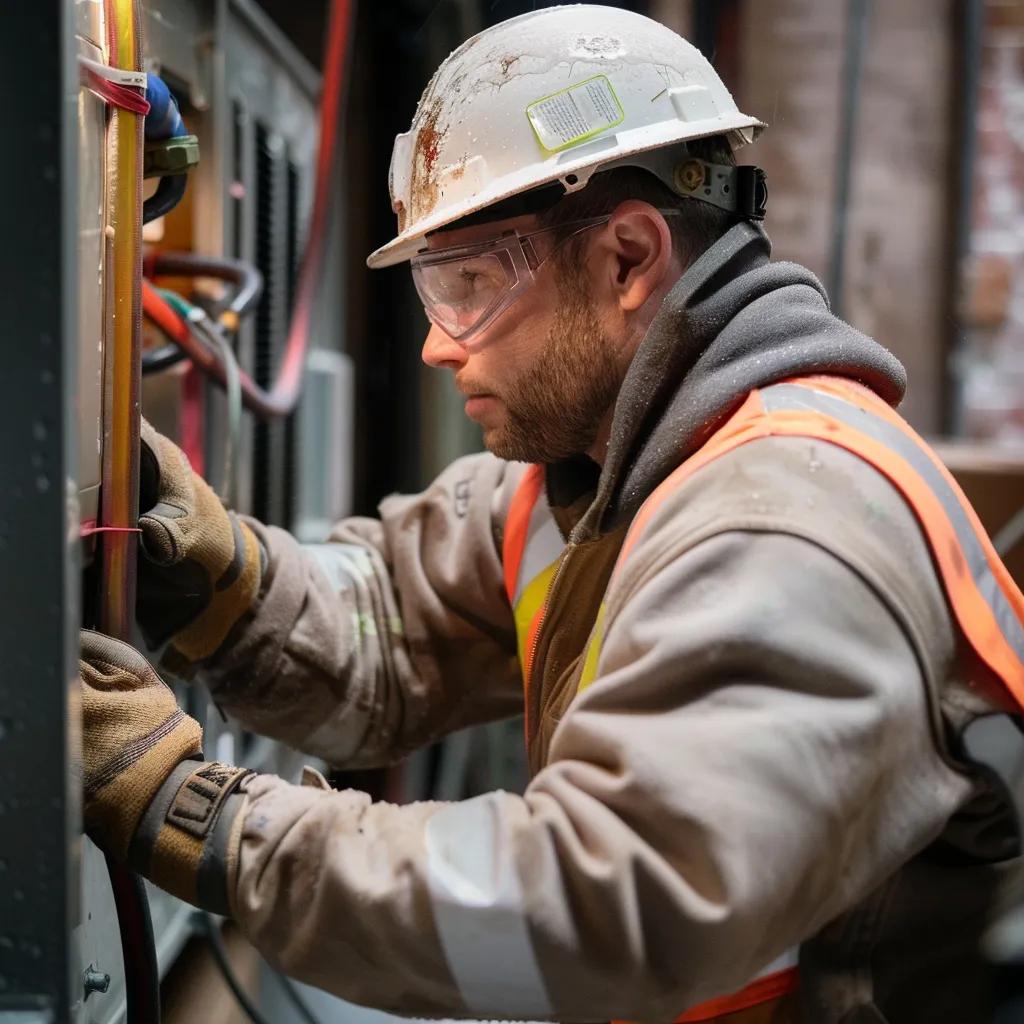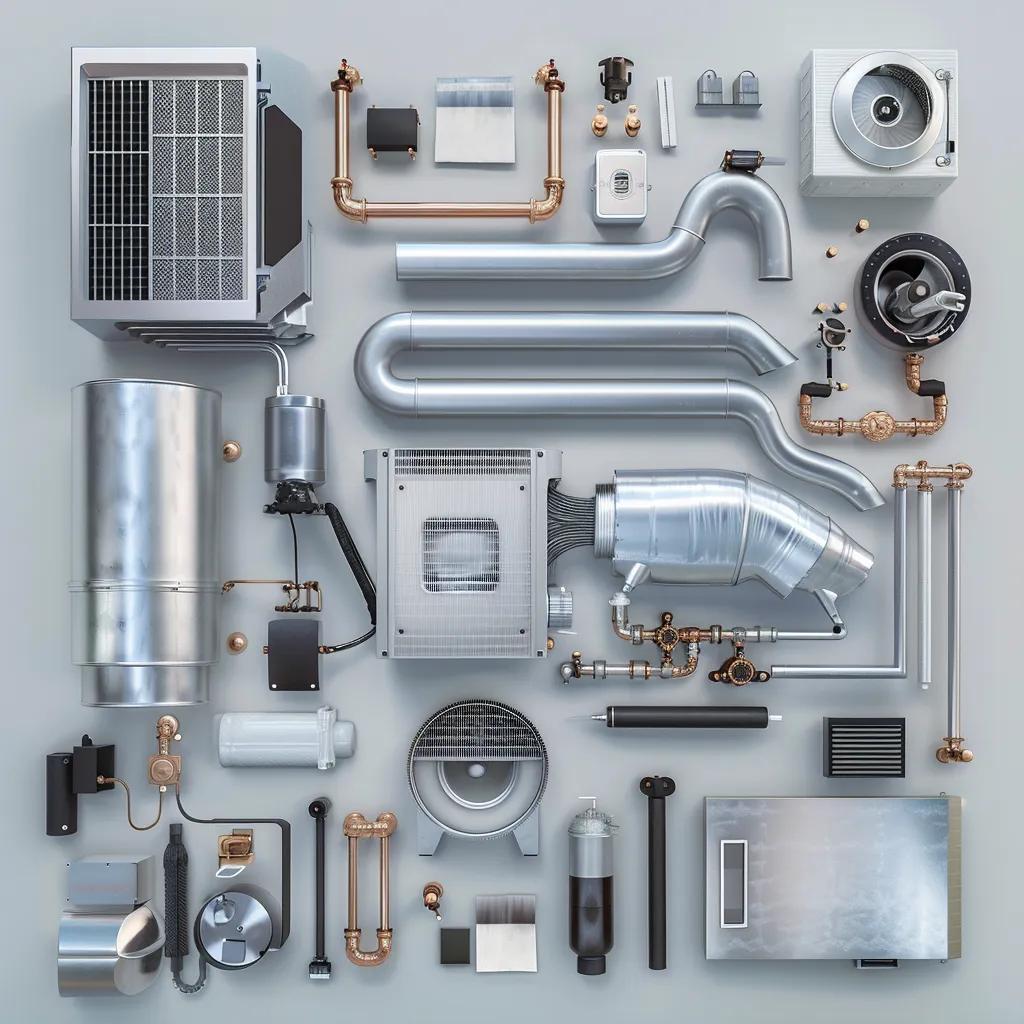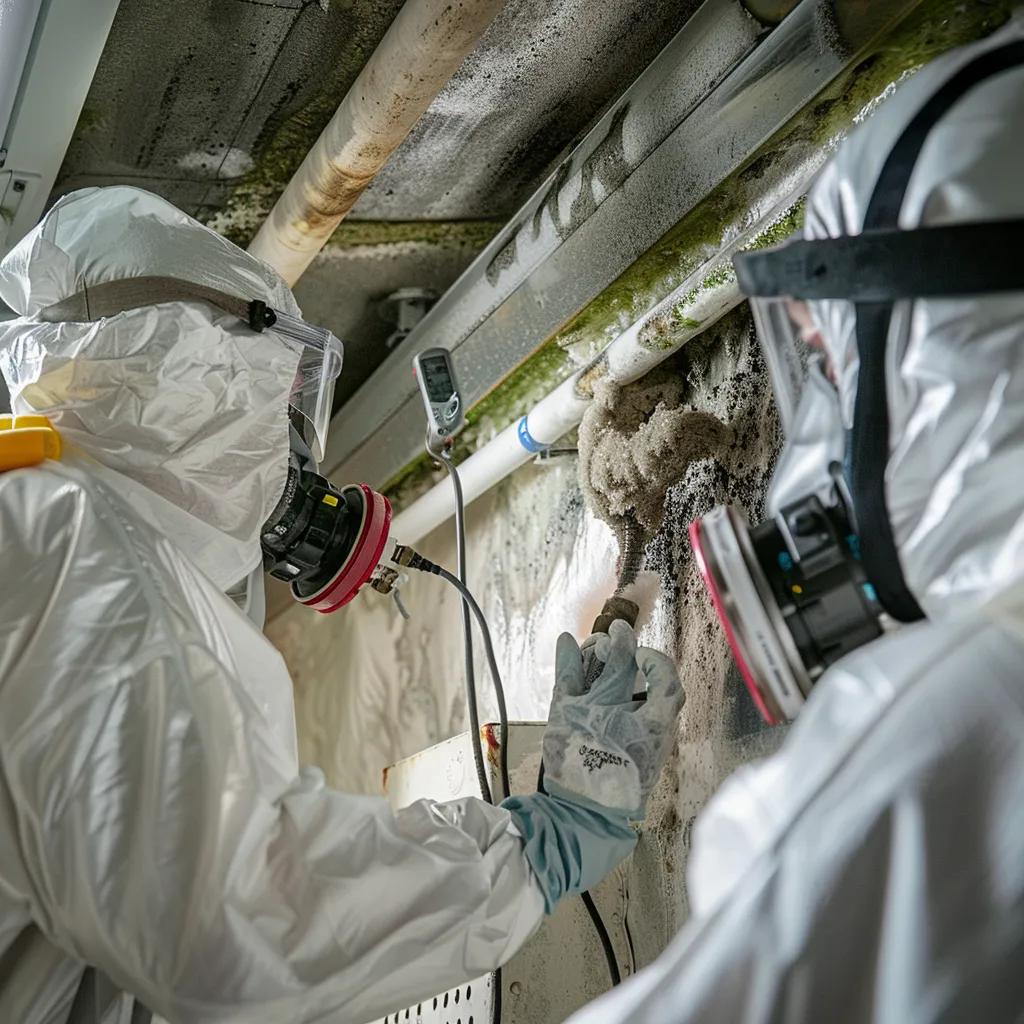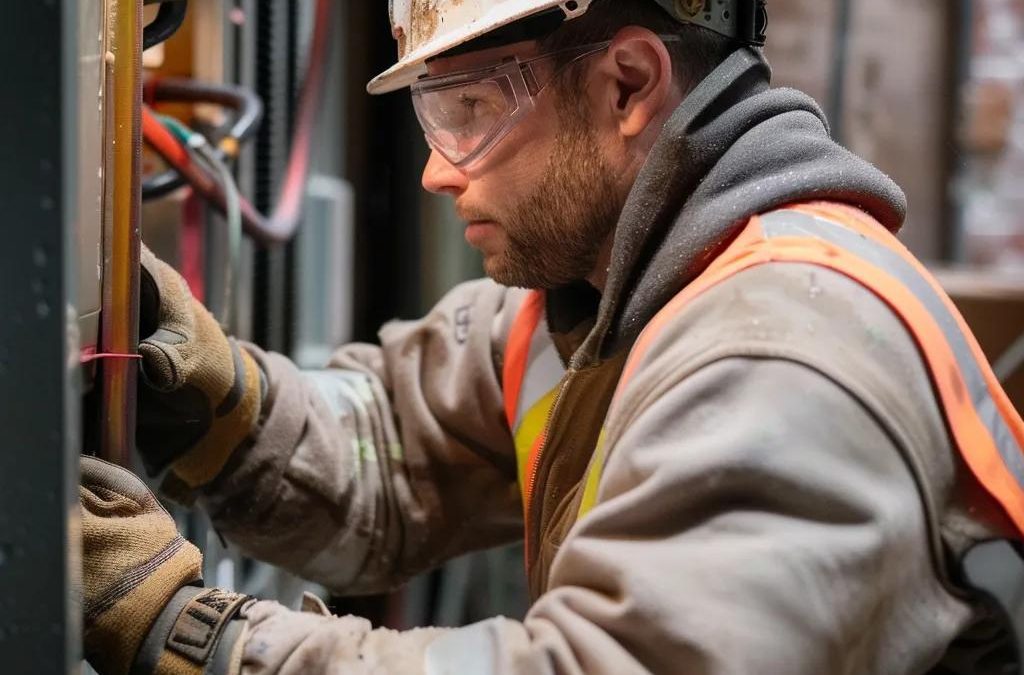
Water Damage Restoration NYC: Understanding the Connection Between Water Damage and HVAC Health

Severe water damage in NYC often extends beyond visible walls and floors to compromise HVAC performance, indoor air quality, and occupant health. In this article, you will learn how water intrusion undermines critical HVAC components, how to spot early signs of damage, the professional restoration process, prevention strategies, insurance coverage options, condensate drain overflow solutions, and mold treatment protocols. Restoration Experts brings over 24/7 emergency response, IICRC-certified technicians, and insurance claim assistance to every HVAC water damage scenario.
How Does Water Damage Affect Your HVAC System?
Water damage occurs when excess moisture infiltrates HVAC equipment, causing corrosion, mold growth, electrical shorts, and efficiency loss. Understanding this link helps you safeguard system integrity and indoor air quality.
Components most vulnerable to leaks, overflow or flooding suffer rapidly escalating damage that can halt climate control and spread contaminants throughout a property. Recognizing these vulnerabilities lays the groundwork for targeted detection and remediation.
What HVAC Components Are Most Vulnerable to Water Damage?

Critical HVAC parts exposed to moisture include coils, condensate pans, blower motors, electrical controls and ductwork. Each element reacts differently to water intrusion, with consequences ranging from performance decline to complete failure.
| Component | Vulnerability | Consequence |
|---|---|---|
| Evaporator Coil | Corrosion & mineral buildup | Reduced heat exchange and refrigerant flow |
| Condensate Pan | Rusting & overflow | Leaks that damage ceilings and walls |
| Blower Motor | Bearing contamination | Noisy operation and motor burnout |
| Electrical Box | Short circuits | System shutdown and fire hazards |
| Ductwork | Moisture retention | Mold colonization and impaired airflow |
Each component’s failure can cascade into broader system breakdown, highlighting the need for early detection and professional intervention in water-damaged HVAC systems.
How Does Water Intrusion Cause Mold Growth in HVAC Systems?
Mold thrives in damp, dark HVAC environments where condensation pools and humidity remains elevated. Spores germinate on moist surfaces of ducts, coil fins and insulation, quickly forming colonies that release allergens and mycotoxins.
Common drivers of mold growth include persistent condensate drain clogs, high indoor humidity, and undetected leaks behind walls. Effective remediation starts with understanding these conditions to break the moisture–mold cycle.
HVAC Water Damage and Mold Growth
Mold thrives in damp, dark HVAC environments, with common drivers including persistent condensate drain clogs and high indoor humidity. These conditions create an environment where mold spores can quickly form colonies, releasing allergens and mycotoxins into the air.
Environmental Protection Agency (EPA), “A Brief Guide to Mold, Moisture, and Your Home” (2024)
This source supports the article’s claims about the conditions that promote mold growth in HVAC systems.
What Are the Electrical Risks of Water Damage to HVAC Units?
Water contacting electrical controls and wiring can trigger short circuits, component failures, and potential fire risks. Circuit boards, relays and thermostats exposed to moisture lose insulation integrity and fail to regulate temperature safely.
Immediate shutdown and professional inspection are essential to prevent permanent damage or safety hazards, ensuring that restored HVAC systems meet all electrical codes and operate reliably.
Electrical Risks of Water Damage
Water contacting electrical controls and wiring can trigger short circuits and potential fire hazards. Circuit boards and thermostats exposed to moisture can lose insulation integrity and fail to regulate temperature safely, leading to system failure and safety risks.
National Fire Protection Association (NFPA), “Electrical Safety in the Home” (2023)
This citation reinforces the article’s discussion of the electrical hazards associated with water damage in HVAC systems.
How Does Water Damage Impact Indoor Air Quality Through HVAC?
Water infiltration degrades filters, nurtures microbial growth, and corrodes metal parts, releasing particulates and microbial volatile organic compounds (mVOCs) into circulating air. Compromised ventilation then distributes allergens and odors throughout occupied spaces.
| Entity | Attribute | Impact |
|---|---|---|
| Air Quality | Contaminant Level | Elevates mold spores, dust mites and allergens |
| HVAC Filter | Saturation Status | Becomes clogged, reducing filtration efficiency |
| Ventilation | Airflow Rate | Drops, leading to stagnant indoor air |
Unchecked air quality deterioration underscores the importance of swift water damage mitigation to preserve healthy indoor environments.
What Are the Common Signs of Water Damage in HVAC Systems?
Early detection of leaks and moisture intrusion in HVAC systems prevents extensive damage. Look for visual, olfactory and performance indicators that signal hidden water issues.
How to Identify Mold and Musty Odors in HVAC Ducts?
Musty smells emanating from vents typically indicate mold growth within ductwork or on coil surfaces. Detect these odors by:
- Inspecting air registers for damp spots and discoloration.
- Smelling each vent individually with the system running.
- Monitoring humidity levels above 50% in supply and return areas.
Identifying odors early allows targeted duct cleaning and mold remediation before health impacts worsen.
What Are the Visual and Functional Indicators of HVAC Water Damage?
Visible water stains, pooling beneath the indoor unit, and rust spots on metal surfaces are clear signs of moisture intrusion. Functionally, you may notice:
- Reduced airflow or weak cooling/heating performance.
- Intermittent dripping or hissing sounds during operation.
- Frequent condensate drain overflows on the ceiling.
These indicators often coincide, guiding technicians to pinpoint and address underlying leaks.
When Should You Suspect HVAC Component Malfunction Due to Water?
Suspect water-induced malfunctions when the system exhibits:
- Unusual noises such as grinding or squealing.
- Electrical breaker trips linked to HVAC operation.
- Sudden spikes in energy bills due to inefficiency.
Prompt professional assessment ensures that hidden water damage doesn’t lead to costly breakdowns or safety hazards.
What Is the Professional Process for HVAC Water Damage Restoration?
A structured restoration process rapidly extracts moisture, eliminates mold risk, cleans components, and restores HVAC health. This ensures reliable performance and safe air quality in residential or commercial properties.
How Does Emergency Water Extraction and Drying Work?
Emergency extraction uses high-capacity pumps and industrial vacuums to remove standing water from HVAC cabinets and condensate pans. Technicians then deploy specialized drying equipment—air movers and dehumidifiers—to reduce relative humidity below 40%.
| Step | Equipment | Outcome |
|---|---|---|
| Water Removal | Pumps & vacuums | Eliminates pooled water quickly |
| High-Volume Airflow | Air movers | Accelerates evaporation of hidden moisture |
| Dehumidification | Refrigerant dehumidifier | Stabilizes ambient humidity for thorough drying |
By rapidly achieving dry conditions, this process prevents further corrosion and mold development in HVAC systems.
What Are the Steps in Mold Remediation for HVAC Systems?

Mold remediation in HVAC units involves a multi-phase approach to safely remove colonies and prevent recurrence:
- Conduct a detailed inspection to map mold locations.
- Seal off affected zones using negative air chambers.
- Mechanically remove mold from coils, pans and ducts.
- Apply EPA-registered antimicrobial treatments to all surfaces.
- Verify clearance through air sampling and visual assessment.
Thorough remediation restores system hygiene and reduces risks to occupant health.
How Are HVAC Components Cleaned and Repaired After Water Damage?
Post-drying, technicians tackle component restoration with:
- Duct Cleaning: High-pressure air whips and HEPA vacuums remove debris and mold spores.
- Coil Cleaning: Foaming agents dissolve corrosion and mineral deposits.
- Motor Service: Bearings and windings are inspected, dried, and lubricated.
- Part Replacement: Severely damaged coils, motors or controls are swapped for new OEM-grade components.
Comprehensive restoration returns HVAC systems to pre-damage efficiency and reliability.
How Does Restoration Experts Assist with Insurance Claims for HVAC Damage?
Navigating insurance claims for HVAC water damage can be complex. Restoration Experts simplifies the process by:
- Documenting damage with photos, moisture maps and equipment logs.
- Preparing detailed estimates aligned with policy terms.
- Communicating directly with adjusters to expedite approvals.
- Offering direct billing to minimize out-of-pocket expenses.
This support ensures homeowners and property managers receive fair compensation and rapid service.
How Can Homeowners and Property Managers Prevent HVAC Water Damage?
Proactive maintenance practices protect HVAC systems from leaks, clogs and moisture buildup, extending equipment life and preserving air quality.
What Maintenance Practices Reduce the Risk of Condensate Drain Overflow?
Regular upkeep of condensate drains prevents water backup and property damage. Key practices include:
- Flushing drains monthly with a 1:1 bleach-to-water solution.
- Inspecting drain lines for algae and mineral blockages quarterly.
- Clearing condensate pans and verifying proper slope toward the outlet.
Consistent maintenance keeps condensate flowing freely and minimizes overflow events.
How Often Should HVAC Systems Be Inspected for Water Damage Risks?
Scheduled inspections catch issues before they escalate. Recommended intervals are:
- Biannual checks in spring and fall before peak cooling/heating seasons.
- Post-storm inspections after heavy rainfall or flooding events.
- Annual professional service by IICRC-certified technicians.
Regular inspections ensure early detection of leaks, corrosion and microbial growth.
What Are Early Warning Signs to Address Before Severe Damage Occurs?
Addressing minor anomalies prevents major repairs later. Watch for:
- Slight discoloration or dampness around indoor units.
- Humidity readings creeping above recommended 40–50% levels.
- Unexplained increases in energy consumption without load changes.
Early action on these signs can avert extensive water damage and associated costs.
What Are the Insurance Coverage Options for HVAC Water Damage in NYC?
Understanding your policy’s coverage ensures that HVAC water damage claims proceed smoothly and maximize eligible benefits.
What Documentation Is Needed for HVAC Water Damage Claims?
Accurate records accelerate claim approval. Essential documentation includes:
- Date-stamped photos of affected HVAC components and surrounding areas.
- Moisture readings from thermal imaging or hygrometers.
- Detailed invoices for emergency extraction, drying, and repairs.
- Technician inspection reports specifying damage causes and remediation steps.
Complete documentation aligns with insurer requirements and supports fair settlement.
How to Work Effectively with Insurance Adjusters on HVAC Damage?
Clear communication with adjusters facilitates claim resolution. Best practices:
- Provide concise summary of damage scope and restoration steps.
- Share inspection reports and cost estimates promptly.
- Be present during adjuster visits to highlight critical issues.
- Leverage Restoration Experts’ direct liaison services for technical clarifications.
Proactive collaboration ensures adjusters fully understand HVAC-specific water damage nuances.
What Does Typical Homeowners Insurance Cover Regarding HVAC Water Damage?
Standard policies in NYC often include:
- Sudden Accidental Discharge: Coverage for leaks from broken pipes within HVAC units.
- Overflow from Internal Systems: Protection when condensate lines back up due to clogging.
- Mold Remediation Add-ons: Optional riders for mold cleanup associated with covered water events.
Insurance Coverage for HVAC Water Damage
Standard homeowners insurance policies in NYC often include coverage for sudden accidental discharge and overflow from internal systems. Reviewing policy details is crucial to confirm limits, deductibles, and necessary endorsements for full protection against water damage.
New York State Department of Financial Services, “Homeowners Insurance Guide” (2024)
This citation supports the article’s information on insurance coverage options for HVAC water damage in NYC.
What Are the Specific Issues Related to HVAC Condensate Drain Overflow?
Condensate drain overflow poses both system-level and structural risks when moisture accumulates faster than it drains away.
What Causes a Clogged HVAC Condensate Drain?
Common blockage sources include:
- Accumulated algae and biofilm in PVC drain lines.
- Mineral scale buildup from hard water deposits.
- Foreign debris such as insulation fragments or dust.
Identifying these causes directs targeted cleaning and prevention measures.
What Are the Risks of Condensate Drain Overflow to HVAC and Property?
Overflowing condensate can lead to:
- Ceiling and floor water damage beneath units.
- Accelerated corrosion of metal HVAC components.
- Mold proliferation in ceiling cavities and duct openings.
Awareness of these risks underscores the importance of timely condensate maintenance.
When Is Professional Repair Needed Versus DIY Solutions?
DIY approaches work for minor clogs, but call in professionals when:
- Drain backups reoccur within weeks of cleaning.
- Overflow has caused structural water damage or mold behind walls.
- System performance remains impaired after basic drain clearing.
Expert intervention ensures comprehensive resolution and prevents recurring issues.
How Is Mold in HVAC Systems Treated After Water Damage?
Effective mold treatment restores safe airflow and prevents long-term health risks associated with HVAC-borne spores.
What Health Risks Does HVAC Mold Pose to Occupants?
Mold in HVAC systems releases allergens and irritants that can trigger:
- Respiratory issues such as asthma and bronchitis.
- Allergic reactions including sneezing and skin irritation.
- Long-term health effects in immunocompromised individuals.
Understanding these risks highlights the urgency of professional mold remediation.
How Is Mold Identified in Air Ducts and Coils?
Accurate detection methods include:
- Visual inspection for discoloration on coils and duct surfaces.
- Surface sampling using swabs or tape lifts for laboratory analysis.
- Air sampling to quantify spore concentrations in supply and return streams.
Reliable identification precedes effective removal and system restoration.
What Are the Professional Mold Removal and Prevention Techniques?
Certified remediation follows strict protocols:
- Contain the HVAC zone with negative air pressure.
- Apply EPA-approved biocides to all mold-affected surfaces.
- Mechanically clean coils, pans and ducts with HEPA-filter vacuums.
- Seal and insulate duct joints to reduce condensation risk.
Combining removal and prevention steps ensures lasting system health.
How Can Mold Recurrence Be Prevented in HVAC Systems?
Long-term prevention relies on:
- Maintaining indoor humidity between 30–50%.
- Scheduling annual HVAC tune-ups and coil cleanings.
- Installing UV-C lamps near coils to inhibit microbial growth.
These measures create inhospitable conditions for mold and preserve air quality.
Professional water damage restoration for HVAC systems demands specialized expertise, rapid response, and thorough remediation. Restoration Experts delivers all three with 24/7 availability, IICRC-certified technicians, and insurance claim support to restore your HVAC health and indoor comfort. Contact us today to request a quote, schedule an emergency call, or learn more about comprehensive water damage restoration services in NYC.
Conclusion
Addressing water damage in HVAC systems is crucial for maintaining indoor air quality and system efficiency. By understanding the risks and implementing proactive measures, homeowners can prevent costly repairs and health hazards. For expert assistance and reliable restoration services, reach out to our team today. Ensure your HVAC system remains healthy and efficient by exploring our comprehensive water damage restoration solutions.
